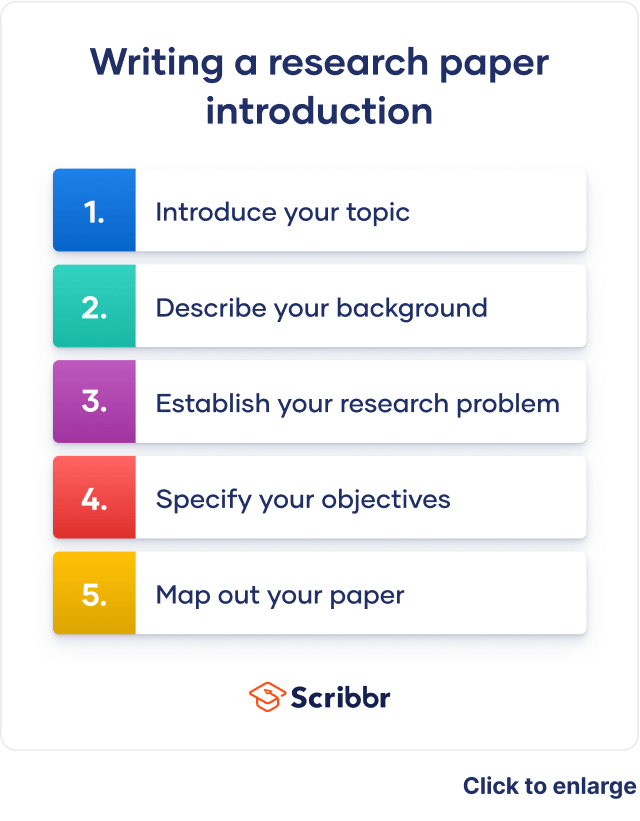- Have your assignments done by seasoned writers. We work 24/7. Just email us at:
- [email protected]


Background Information in an Essay: How to Write and Example

Background Information in an Essay
When assigned an essay, it is advisable to assume that your target audience does not know anything about your topic hence the reason why you should provide background information.
This enhances your audience’s understanding of the essay topic and subject matter. They will know what to expect in the body paragraphs of the essay.
Even though the essay has been assigned to you by your instructor and they already know the expectations, it is important to provide some background information in the introduction.

What is the Background of an Essay?
A background in an essay is the part or point within the essay where you provide contextual knowledge or introductory information to the readers to help them understand the essay’s subject matter.

The background sets the stage for the main arguments or discussion that will be presented in the essay.
What is Background Information in an Essay?
“Background information” in an essay is the content that is provided within an essay’s background to provide the readers with introductory information or contextual knowledge.
The background information helps orient your readers and equip them with the relevant foundational knowledge and context to understand the main discussions and arguments that follow within the body paragraphs.
When you provide the background information within your essay, you are establishing to your readers the relevance of your topic. This gives them the relevant information to engage with the content of your essay.
Also Read : Can a Literature Review have Pictures, Diagrams or Charts?
How to Write Background Information in an Essay
1. identify the key elements.
When writing background information in an essay, it is important to determine the key aspects of your topic that need to be addressed within the section.
Normally, the background information of an essay includes elements like a brief introduction of your topic, key definitions and concepts, historical context, relevant data or facts, and an overview of the existing research relating to your topic.
2. Conduct Research and Gather Relevant Information
Before writing the background information of your essay, ensure that you have conducted thorough research so that you can gather the relevant information and sources that are related to your topic.
It would be difficult to briefly introduce the topic and provide a brief historical context without understanding your topic through research. If possible start discussion posts on relevant platforms to gather further insights.
You should only utilize reputable sources such as scholarly articles and journals, books, and credible websites so that the information you provide in the background is accurate and reliable.
3. Organize the Information
Once you have researched and gathered the relevant information concerning your topic, organize it in such a way that it is logical and coherent.
Put into consideration the flow of the information in addition to how it will effectively support the main discussion or argument in your essay.
4. Begin with a Broad Introduction
When writing the background information section of the essay, start with a broad introduction to your topic.
Give a brief overview of the topic’s subject matter and its significance. This will set the context of the essay and grab your readers’ attention.
5. Give Historical Context if Applicable
If your essay’s topic has some historical aspects, provide relevant historical background information.
Here, you should provide key historical developments, events, or circumstances that will help your readers understand the current issue or situation presented in your topic.
6. Define Key Concepts and Terms

Introduce and define any specialized jargon, terms, or concepts that may be unfamiliar to your readers.
This ensures that the readers have a clear understanding of the terminologies and concepts used throughout the essay.
7. Present Relevant Data or Facts
Include relevant facts, data, or statistics that will help in establishing the magnitude or scope of your topic. This can give a qualitative or quantitative perspective on the issues discussed.
8. Summarize Existing Research if Applicable
When your essay is part of a greater academic discourse, briefly summarize the key arguments or findings from relevant scholarly sources .
This shows that you acknowledge the existing body of knowledge concerning your topic and highlights your essay’s contribution to the academic discourse.
In summary, when you are writing the background information in an essay, it is imperative to ensure that you present it clearly and concisely in addition to being relevant to the essay’s topic.
Avoid spending a lot of time on it and providing too much information and details.
Also Read : Time to Write a Thesis or Dissertation: Tips to Finish Fast
How to Write Background Section in Research Writing
The background section in research writing differs from that of an essay because it gives a more in-depth and comprehensive review of the existing research and literature related to your topic.
When writing the background section in research, you should:
Conduct a Literature Review

You should conduct a thorough literature review before writing the background section.
This will help you identify and father relevant scholarly sources like books, journal articles, and conference papers.
Organize the Literature
Analyze and organize the gathered literature per the relevant theories, themes, or key research findings.
Note the major concepts and gaps within the existing research that your study wishes to address.
Provide a Historical Context
Provide a brief historical context of your topic that traces the evolution of the research question or development of the field.
This helps your readers understand how your research fits within the broader scholarly discourse, in addition to how the ideas have progressed.
Present Key Concepts and Theories
Briefly introduce and explain the key concepts, models, and theories that are relevant to the research.
This shows that you understand the theoretical framework that underpins your research. It also provides your research question’s foundation.
Highlight Research Questions and Gaps
Identify the limitations or gaps within the existing literature that your study aims to fill.
State the objectives or research questions of your study and explain how they will address the identified gaps.
Justify your Research’s Significance
Explain the relevance and significance of your research within the larger practical or academic context.
Demonstrate how your study contributes to existing knowledge, addresses a practical problem, or advances the field.
Also Read : Should a Literature Review be Critical? Tips How to do it
Background Information Example
An example of background information from an essay with the topic “The Benefits of Exercise on Mental Health” is:
“Exercise has long been recognized as a fundamental component of a healthy lifestyle. Beyond its physical benefits, several studies have shown that exercise also has a positive impact on mental health.
Regular physical activity has been linked to improved mood, reduced symptoms of anxiety and depression, and enhanced overall well-being. Research has shown that exercise can mitigate the risk of developing mental health disorders. It has been associated with a lower incidence of conditions such as depression and anxiety, in addition to playing a crucial role in the management and treatment of these conditions as well.
Understanding the benefits of exercise on mental health is essential for individuals seeking to improve their overall well-being. By incorporating regular physical activity into their routines, individuals can experience improved mood, reduced stress levels, and enhanced mental resilience.
This essay explores the existing literature on the relationship between exercise and mental health, highlighting the specific mechanisms through which exercise positively affects mental well-being. The aim is to further emphasize the importance of exercise as a tool for promoting mental health and well-being”.
Also Read : How to Tell If a Research Paper Is Good: Tips from A to Z
Do’s & Don’ts when Writing Background Information
As earlier discussed in this article, the Do’s when writing background information includes providing the necessary context, including relevant facts and data, citing credible sources, focusing on relevance to the topic, and being concise.
Do not include irrelevant information or overgeneralize, do not plagiarize, and do not overwhelm your readers with too much information or details since they will be provided in the body.

Josh Jasen or JJ as we fondly call him, is a senior academic editor at Grade Bees in charge of the writing department. When not managing complex essays and academic writing tasks, Josh is busy advising students on how to pass assignments. In his spare time, he loves playing football or walking with his dog around the park.
Related posts

Someone to format my paper in APA for me
How to Write and Cite Sources in APA and MLA for Term Papers

research paper length
How Long Should a Research Paper be: From Intro to conclusion

writing Nursing Research Paper
How to Write a Nursing Term Paper or Nursing Research Paper
Calculate for all schools
Your chance of acceptance, your chancing factors, extracurriculars, personal background essay examples.
Hey everyone! I'm working on my college applications, and part of it requires a personal background essay. I'm a little stuck, so if you guys could share some examples or tips, that'd be great! Please help me out, thanks!
Hello! It's understandable that writing a personal background essay can be challenging. Here are some tips to get you started and an example of how you might approach this essay:
1. Reflect on what makes your background unique. Consider your family's history, culture, traditions, values, and how these have shaped your experiences.
2. Delve into the details. Discuss specific experiences, anecdotes, or events that have had a significant impact on your life and highlight the lessons you've gained from your background.
3. Be authentic. Write from the heart and let your personality shine through. This essay is your opportunity to help the admissions officers get to know you beyond your stats and accomplishments.
4. Avoid clichés. Personal background essays are quite common, so if you're writing about a widely-covered topic (moving, learning a new language, etc.), try to find a unique angle or aspect that will set your essay apart.
Growing up in a multigenerational household, I've had the rare privilege of experiencing diverse perspectives on life from my grandparents, parents, and siblings. My grandparents, who emigrated from Vietnam, taught me the importance of staying true to our cultural heritage and maintaining strong connections with family. Daily rituals like preparing and enjoying traditional Vietnamese meals, participating in Lunar New Year celebrations, and listening to stories about my grandparents' journey to the United States helped me appreciate the strength and resilience of my ancestors.
However, this cultural pride was not always something I cherished. As a child, I was bullied for my Banh Khot and Banh Mi lunches, and I'd often ask my parents to pack more generic-looking sandwiches to avoid feeling like an outsider at school. It wasn't until my grandmother shared her own story of assimilation and how she strived to maintain her cultural identity in a new country that I realized the value of embracing my heritage. Inspired by her courage, I decided to educate my peers about Vietnamese traditions and founded a cultural exchange club at school. Together, we explored our heritages, organizing potlucks, cultural presentations, and language exchange sessions.
Through this experience, I've learned that embracing who I am and the unique background I come from has made me a stronger person. My personal background has taught me to be open to learning about other cultures, which I look forward to bringing to my future college community.

About CollegeVine’s Expert FAQ
CollegeVine’s Q&A seeks to offer informed perspectives on commonly asked admissions questions. Every answer is refined and validated by our team of admissions experts to ensure it resonates with trusted knowledge in the field.
Have a language expert improve your writing
Run a free plagiarism check in 10 minutes, generate accurate citations for free.
- Knowledge Base
- Research paper
Writing a Research Paper Introduction | Step-by-Step Guide
Published on September 24, 2022 by Jack Caulfield . Revised on September 5, 2024.

The introduction to a research paper is where you set up your topic and approach for the reader. It has several key goals:
- Present your topic and get the reader interested
- Provide background or summarize existing research
- Position your own approach
- Detail your specific research problem and problem statement
- Give an overview of the paper’s structure
The introduction looks slightly different depending on whether your paper presents the results of original empirical research or constructs an argument by engaging with a variety of sources.
The five steps in this article will help you put together an effective introduction for either type of research paper.
Instantly correct all language mistakes in your text
Upload your document to correct all your mistakes in minutes

Table of contents
Step 1: introduce your topic, step 2: describe the background, step 3: establish your research problem, step 4: specify your objective(s), step 5: map out your paper, research paper introduction examples, frequently asked questions about the research paper introduction.
The first job of the introduction is to tell the reader what your topic is and why it’s interesting or important. This is generally accomplished with a strong opening hook.
The hook is a striking opening sentence that clearly conveys the relevance of your topic. Think of an interesting fact or statistic, a strong statement, a question, or a brief anecdote that will get the reader wondering about your topic.
For example, the following could be an effective hook for an argumentative paper about the environmental impact of cattle farming:
A more empirical paper investigating the relationship of Instagram use with body image issues in adolescent girls might use the following hook:
Don’t feel that your hook necessarily has to be deeply impressive or creative. Clarity and relevance are still more important than catchiness. The key thing is to guide the reader into your topic and situate your ideas.
Prevent plagiarism. Run a free check.
This part of the introduction differs depending on what approach your paper is taking.
In a more argumentative paper, you’ll explore some general background here. In a more empirical paper, this is the place to review previous research and establish how yours fits in.
Argumentative paper: Background information
After you’ve caught your reader’s attention, specify a bit more, providing context and narrowing down your topic.
Provide only the most relevant background information. The introduction isn’t the place to get too in-depth; if more background is essential to your paper, it can appear in the body .
Empirical paper: Describing previous research
For a paper describing original research, you’ll instead provide an overview of the most relevant research that has already been conducted. This is a sort of miniature literature review —a sketch of the current state of research into your topic, boiled down to a few sentences.
This should be informed by genuine engagement with the literature. Your search can be less extensive than in a full literature review, but a clear sense of the relevant research is crucial to inform your own work.
Begin by establishing the kinds of research that have been done, and end with limitations or gaps in the research that you intend to respond to.
The next step is to clarify how your own research fits in and what problem it addresses.
Argumentative paper: Emphasize importance
In an argumentative research paper, you can simply state the problem you intend to discuss, and what is original or important about your argument.
Empirical paper: Relate to the literature
In an empirical research paper, try to lead into the problem on the basis of your discussion of the literature. Think in terms of these questions:
- What research gap is your work intended to fill?
- What limitations in previous work does it address?
- What contribution to knowledge does it make?
You can make the connection between your problem and the existing research using phrases like the following.
| Although has been studied in detail, insufficient attention has been paid to . | You will address a previously overlooked aspect of your topic. |
| The implications of study deserve to be explored further. | You will build on something suggested by a previous study, exploring it in greater depth. |
| It is generally assumed that . However, this paper suggests that … | You will depart from the consensus on your topic, establishing a new position. |
Now you’ll get into the specifics of what you intend to find out or express in your research paper.
The way you frame your research objectives varies. An argumentative paper presents a thesis statement, while an empirical paper generally poses a research question (sometimes with a hypothesis as to the answer).
Argumentative paper: Thesis statement
The thesis statement expresses the position that the rest of the paper will present evidence and arguments for. It can be presented in one or two sentences, and should state your position clearly and directly, without providing specific arguments for it at this point.
Empirical paper: Research question and hypothesis
The research question is the question you want to answer in an empirical research paper.
Present your research question clearly and directly, with a minimum of discussion at this point. The rest of the paper will be taken up with discussing and investigating this question; here you just need to express it.
A research question can be framed either directly or indirectly.
- This study set out to answer the following question: What effects does daily use of Instagram have on the prevalence of body image issues among adolescent girls?
- We investigated the effects of daily Instagram use on the prevalence of body image issues among adolescent girls.
If your research involved testing hypotheses , these should be stated along with your research question. They are usually presented in the past tense, since the hypothesis will already have been tested by the time you are writing up your paper.
For example, the following hypothesis might respond to the research question above:
Scribbr Citation Checker New
The AI-powered Citation Checker helps you avoid common mistakes such as:
- Missing commas and periods
- Incorrect usage of “et al.”
- Ampersands (&) in narrative citations
- Missing reference entries

The final part of the introduction is often dedicated to a brief overview of the rest of the paper.
In a paper structured using the standard scientific “introduction, methods, results, discussion” format, this isn’t always necessary. But if your paper is structured in a less predictable way, it’s important to describe the shape of it for the reader.
If included, the overview should be concise, direct, and written in the present tense.
- This paper will first discuss several examples of survey-based research into adolescent social media use, then will go on to …
- This paper first discusses several examples of survey-based research into adolescent social media use, then goes on to …
Scribbr’s paraphrasing tool can help you rephrase sentences to give a clear overview of your arguments.
Full examples of research paper introductions are shown in the tabs below: one for an argumentative paper, the other for an empirical paper.
- Argumentative paper
- Empirical paper
Are cows responsible for climate change? A recent study (RIVM, 2019) shows that cattle farmers account for two thirds of agricultural nitrogen emissions in the Netherlands. These emissions result from nitrogen in manure, which can degrade into ammonia and enter the atmosphere. The study’s calculations show that agriculture is the main source of nitrogen pollution, accounting for 46% of the country’s total emissions. By comparison, road traffic and households are responsible for 6.1% each, the industrial sector for 1%. While efforts are being made to mitigate these emissions, policymakers are reluctant to reckon with the scale of the problem. The approach presented here is a radical one, but commensurate with the issue. This paper argues that the Dutch government must stimulate and subsidize livestock farmers, especially cattle farmers, to transition to sustainable vegetable farming. It first establishes the inadequacy of current mitigation measures, then discusses the various advantages of the results proposed, and finally addresses potential objections to the plan on economic grounds.
The rise of social media has been accompanied by a sharp increase in the prevalence of body image issues among women and girls. This correlation has received significant academic attention: Various empirical studies have been conducted into Facebook usage among adolescent girls (Tiggermann & Slater, 2013; Meier & Gray, 2014). These studies have consistently found that the visual and interactive aspects of the platform have the greatest influence on body image issues. Despite this, highly visual social media (HVSM) such as Instagram have yet to be robustly researched. This paper sets out to address this research gap. We investigated the effects of daily Instagram use on the prevalence of body image issues among adolescent girls. It was hypothesized that daily Instagram use would be associated with an increase in body image concerns and a decrease in self-esteem ratings.
The introduction of a research paper includes several key elements:
- A hook to catch the reader’s interest
- Relevant background on the topic
- Details of your research problem
and your problem statement
- A thesis statement or research question
- Sometimes an overview of the paper
Don’t feel that you have to write the introduction first. The introduction is often one of the last parts of the research paper you’ll write, along with the conclusion.
This is because it can be easier to introduce your paper once you’ve already written the body ; you may not have the clearest idea of your arguments until you’ve written them, and things can change during the writing process .
The way you present your research problem in your introduction varies depending on the nature of your research paper . A research paper that presents a sustained argument will usually encapsulate this argument in a thesis statement .
A research paper designed to present the results of empirical research tends to present a research question that it seeks to answer. It may also include a hypothesis —a prediction that will be confirmed or disproved by your research.
Cite this Scribbr article
If you want to cite this source, you can copy and paste the citation or click the “Cite this Scribbr article” button to automatically add the citation to our free Citation Generator.
Caulfield, J. (2024, September 05). Writing a Research Paper Introduction | Step-by-Step Guide. Scribbr. Retrieved October 21, 2024, from https://www.scribbr.com/research-paper/research-paper-introduction/
Is this article helpful?

Jack Caulfield
Other students also liked, writing strong research questions | criteria & examples, writing a research paper conclusion | step-by-step guide, research paper format | apa, mla, & chicago templates, what is your plagiarism score.
This website is dedicated to English Literature, Literary Criticism, Literary Theory, English Language and its teaching and learning.
Background Information
Background information: what is this.
Table of Contents
Features of Background Information
Type of background information in an essay.
Background information is part of the introduction. It relies heavily on the type of the topic. It could be statistical, historical, cultural, literary, or even laws and policies. Here are some major types of background information.
| Information about relevant historical events, developments, or eras pertinent to the topic. | Explaining the impact of the Industrial Revolution on urbanization in the 19th century. | |
| Explanation of social factors, norms, or trends that influence or shape the subject matter. | Analyzing how changing gender roles in society have impacted family dynamics. | |
| Description of cultural aspects, beliefs, values, or practices relevant to understanding the topic. | Discussing how religious beliefs influence dietary habits in different cultures. | |
| Presentation of scientific theories, concepts, principles, or technological advancements central to the topic. | Exploring the role of quantum mechanics in the development of modern computing technology. | |
| Clarification of key terms, concepts, or specialized vocabulary used in the essay for common understanding. | Defining terms like “sustainability” and “ecosystem services” in an environmental science paper. | |
| Inclusion of relevant numerical data, statistics, or research findings that support the essay’s arguments. | Using crime rate statistics to analyze the effectiveness of a new policing strategy. | |
| Introduction of influential or notable figures, experts, or researchers associated with the topic. | Highlighting the contributions of Marie Curie to the field of radiology. | |
| Discussion of relevant laws, policies, or regulations with implications for the topic being addressed. | Examining the impact of the Clean Air Act on air quality and industrial practices. | |
| Highlighting of contentious issues, debates, or conflicting viewpoints surrounding the topic. | Exploring the ethical debate around genetic engineering in the field of biotechnology. | |
| Summary of prior studies, research, or scholarly works related to the essay’s subject matter. | Reviewing existing literature on the effects of climate change on marine ecosystems. | |
| Discussion of recent news, trends, or events relevant to the essay’s topic. | Analyzing the geopolitical implications of recent trade agreements on global supply chains. |
Placement of Background Information in an Essay
Ultimately, the placement of background information depends on the structure, coherence, and specific needs of the topic being discussed in that essay. It is important to ensure that the background information is seamlessly integrated and that it supports the main arguments or analysis.
Examples of Background Information in an Essay
Background Information: Climate change, driven by human activities of burning fossil fuels and deforestation, has emerged as a global challenge. It is because the rising levels of greenhouse gases in the atmosphere have led to a gradual increase in global temperature. It has resulted in a wide range of harmful impacts on our ecosystem. From changing weather patterns to melting glaciers and from disrupting habitats to endangering animal species, climate change has posed serious threats to the delicate balance of our ecosystems.
Background Information: Social media platforms are witnessing an unprecedented upsurge in popularity. They are transforming the way we communicate, share information, and interact with others. While these platforms have facilitated connectivity and information sharing between people, research shows that excessive use of social media also has harmful effects on the mental health of users. The constant exposure to idealized images, the pressure to gain likes and followers, and the fear of disappearing on social media platforms lead to anxiety, depression, and low self-esteem, impacting well-being of users.
Hook: “Picture a world where rural communities have transformed into bustling urban centers, steam-powered machines replaced manual labor, and mass production changed the way goods are manufactured.”
Background Information: The Industrial Revolution, a period of fast industrialization and technological progress during the 18th and 19th centuries, had a profound impact on society, the economy, and the daily routines of the people. It has marked a shift from agrarian-based economies to industrialized economies. It has happened due to innovative inventions such as the steam engine, machines, and assembly line productions in factories. The Industrial Revolution also caused massive urbanization, an increase in the working class, fast transportation, and rapid communication networks. It has also brought significant social changes, including the rise of labor movements and political debates about the rights of workers, social inequality, and social mobility.
Suggested Readings
You may read more on essay writing below:, related posts:, leave a reply cancel reply.
Save my name, email, and website in this browser for the next time I comment.
Background Information
Definition of background information, types of background information, examples of background information in literature, example #1: politics and english language (by george orwell).
“ Now , it is clear that the decline of a language must ultimately have political and economic causes: it is not due simply to the bad influence of this or that individual writer. But an effect can become a cause, reinforcing the original cause and producing the same effect in an intensified form, and so on indefinitely. A man may take to drink because he feels himself to be a failure, and then fail all the more completely because he drinks. It is rather the same thing that is happening to the English language.”
Example #2: I Twitter, Therefore I am (by Peggy Orenstein)
“I came late to Twitter. I might have skipped the phenomenon altogether, but I have a book coming out this winter , and publishers, scrambling to promote 360,000- character tomes in a 140-character world, push authors to rally their “tweeps” to the cause. Leaving aside the question of whether that actually boosts sales, I felt pressure to produce. I quickly mastered the Twitterati’s unnatural self-consciousness: processing my experience instantaneously, packaging life as I lived it.”
Example #3: Is Google Making Us Stupid (by Nicholas Carr)
“For me, as for others, the Net is becoming a universal medium, the conduit for most of the information that flows through my eyes and ears and into my mind. The advantages of having immediate access to such an incredibly rich store of information are many, and they’ve been widely described and duly applauded.”
Function of Background Information
Post navigation.

IMAGES
VIDEO
COMMENTS
The following examples show that adding background information doesn’t have to be distracting for the reader. You can see how this works in a variety of pieces, including personal essays, research papers, and more. In each example, the background information is italicized.
The main goals of an introduction are to: Catch your reader’s attention. Give background on your topic. Present your thesis statement —the central point of your essay. This introduction example is taken from our interactive essay example on the history of Braille.
General background is presented in the introduction. If you have additional background to present, this information will usually come at the start of the body. The third principle is that everything in your essay should be relevant to the thesis.
A background in an essay is the part or point within the essay where you provide contextual knowledge or introductory information to the readers to help them understand the essay’s subject matter. The background sets the stage for the main arguments or discussion that will be presented in the essay.
Here are some tips to get you started and an example of how you might approach this essay: Tips: 1. Reflect on what makes your background unique. Consider your family's history, culture, traditions, values, and how these have shaped your experiences.
Step 1: Introduce your topic. Step 2: Describe the background. Step 3: Establish your research problem. Step 4: Specify your objective (s) Step 5: Map out your paper. Research paper introduction examples. Frequently asked questions about the research paper introduction. Step 1: Introduce your topic.
The background of an essay encompasses the historical, cultural, social, and theoretical context that surrounds the topic being discussed. It offers relevant information that aids readers in comprehending the subject's origins, development, and current relevance.
As you draft your introduction, it can be helpful to think about how you arrived at your thesis and to take your reader through a shortened version of that process by framing the question or problem that you are trying to answer and explaining why it’s worth exploring.
Examples of Background Information in an Essay. Example 1: Topic: The Effects of Climate Change on Global Ecosystems; Hook: “Imagine a world where coral reefs turn pale and lifeless, once-lush rainforests transform into arid landscapes, and iconic species vanish forever.”
As the name suggests, background information means all information that a reader requires to increase his awareness of the topic an essay is going to explain. Background information is placed shortly after the hook or attention grabber.